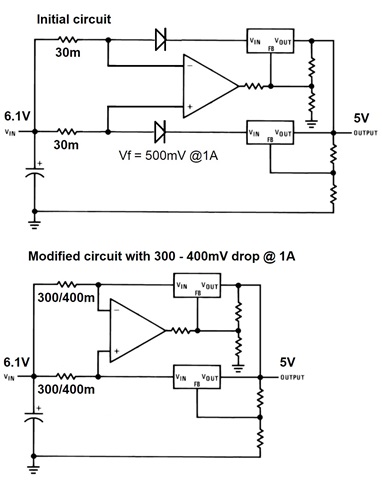Other Parts Discussed in Thread: TPS7A52, , OPA187, OPA189, OPA196, OPA191, TLV9101, OPA186, OPA828
Hi,
I am working on a current-sharing dual LDO power rail with two TPS7A52 LDO in parallel. I am following the instructions in the paper “6A Current-Sharing Dual LDO”
This circuit uses a OPA333 for the external control loop ensure equal distribution of the current between the two LDOs. The circuit as described has a max input voltage of 5.5V.
My design has an input voltage of 6.1V, so the OPA333 cannot be used.
I found the OPA187 and OPA 189, but I am not sure if they are an option for the circuit.
Can you please advise me further.
Thanks, Wiebren

Link to the paper with the circuit and details: https://www.ti.com/lit/ug/tidu421/tidu421.pdf?ts=1673643173469


